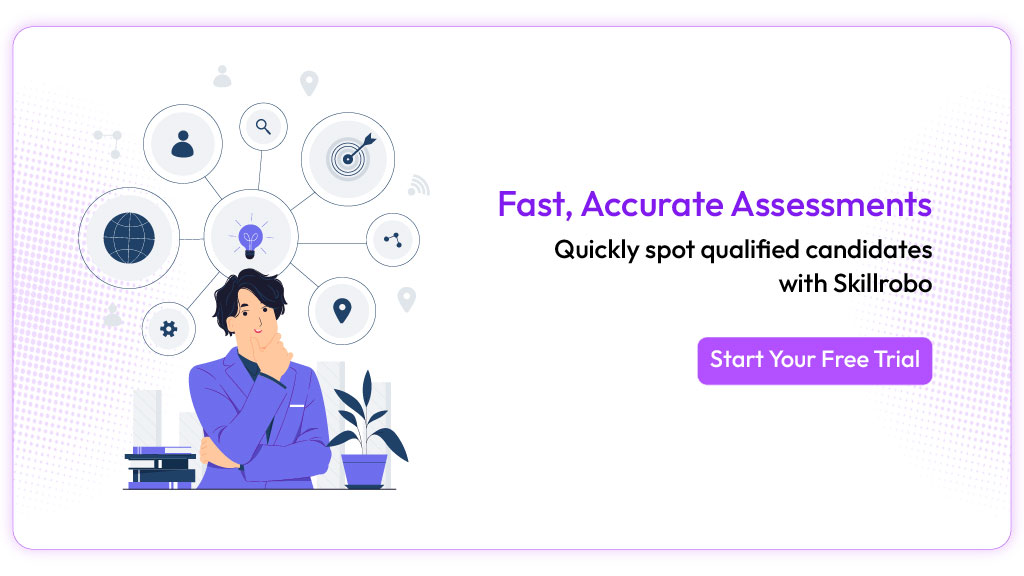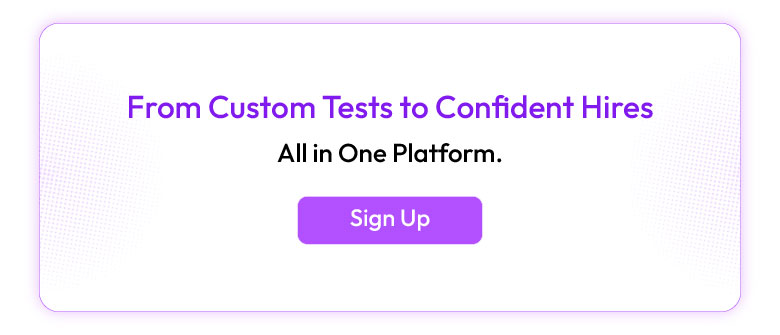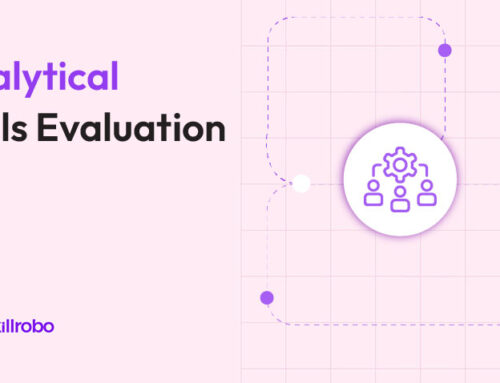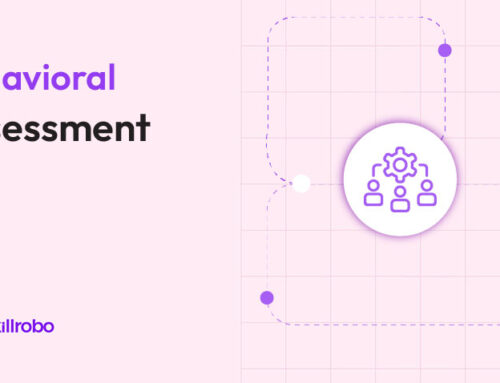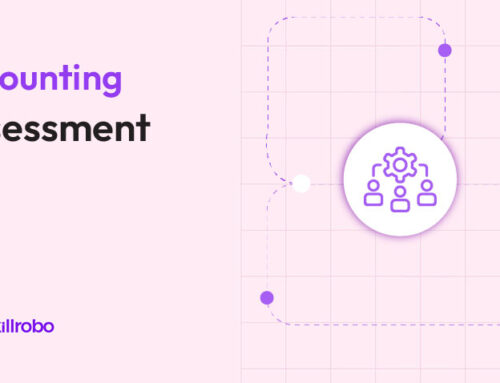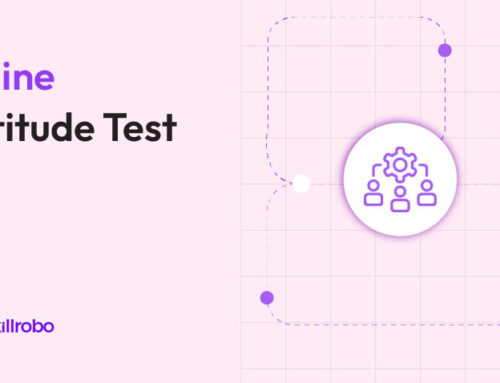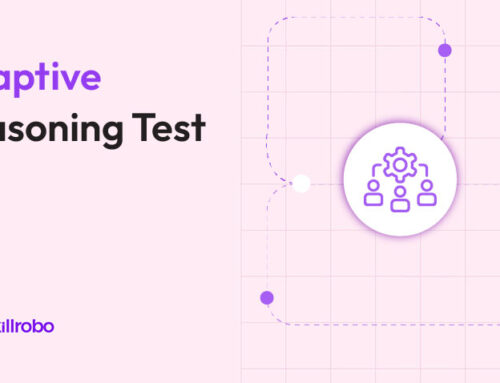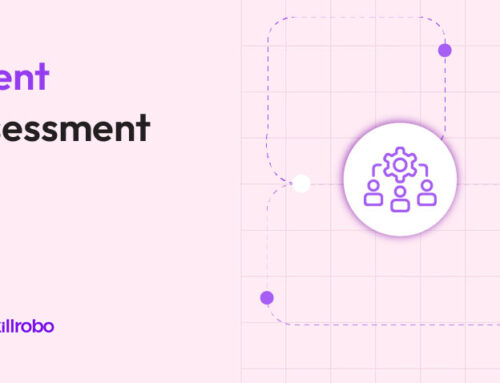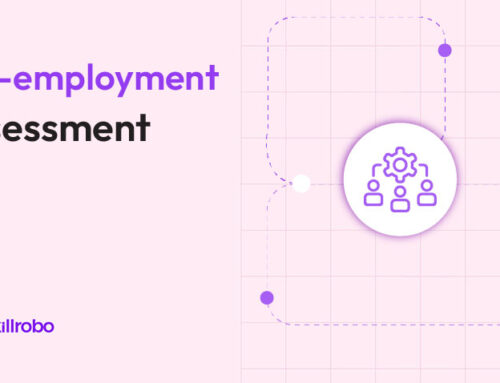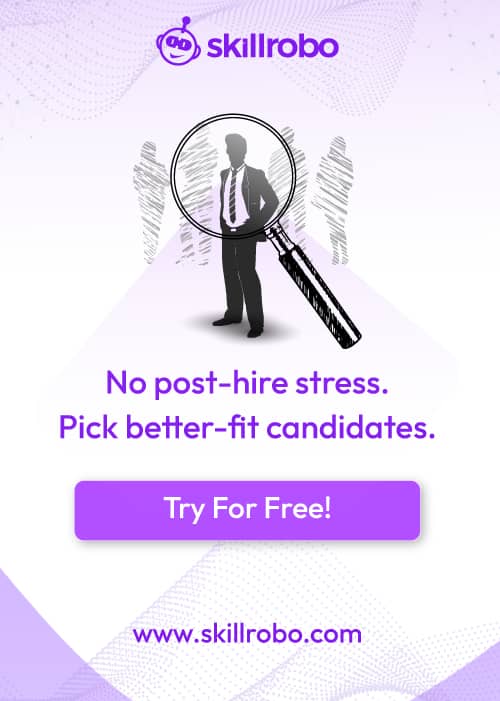Table of Contents
Related articles
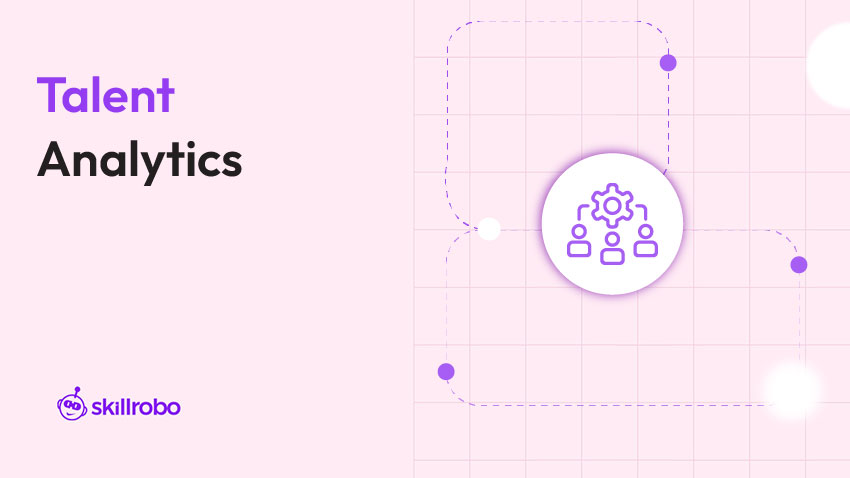
Key Takeaways
- Talent analytics empowers HR to make informed, data-backed decisions in recruitment, retention, and development strategies.
- Integrating talent acquisition analytics improves sourcing efficiency and quality-of-hire metrics.
- Using talent analytics software helps forecast turnover, plan succession, and personalize employee engagement.
- Combining AI talent assessment with analytics enhances predictive hiring and skills-based evaluations.
Why Talent Analytics Matters Now More Than Ever
HR teams are no longer relying on instinct alone to make hiring or retention decisions. Instead, they’re turning to talent analytics to unlock insights that were previously invisible. Whether it’s predicting which employee is likely to leave or identifying top-performing candidates during hiring, talent analytics enables HR to shift from reactive to proactive decision-making.
According to Visier, companies that adopt HR analytics outperform their peers by 82% in key talent outcomes and 58% in business outcomes. From improving diversity to enhancing internal mobility, talent analytics is the backbone of modern talent management.
What is Talent Analytics?
Talent analytics is the strategic use of data and algorithms to measure and optimize workforce performance, hiring quality, employee engagement, and turnover rates. It brings together data from multiple systems—ATS, HRIS, LMS—and turns it into actionable insights.
Unlike traditional HR reporting, which focuses on past events, predictive talent analytics forecasts future behaviors and outcomes. This means HR leaders can anticipate attrition, identify skill gaps, and plan for succession with greater accuracy. Talent analytics also supports AI talent assessment by enabling more accurate, bias-free decision-making.
“Without data, you’re just another person with an opinion.”
— W. Edwards Deming
Talent Acquisition Analytics: Hiring with Precision
Recruitment isn’t just about filling positions—it’s about building a high-performing workforce that aligns with business objectives. Talent acquisition analytics helps hiring teams go beyond surface-level data and dive deep into the metrics that matter most. By leveraging data from multiple sources, like applicant tracking systems (ATS), job boards, and candidate assessments, organizations can optimize every stage of the hiring funnel.
Talent acquisition analytics provides detailed insights into sourcing effectiveness, candidate quality, and hiring timelines. This empowers HR professionals to make faster, smarter, and more cost-effective decisions. With the right talent analytics software in place, companies can reduce hiring risks, enhance candidate experience, and predict hiring success more accurately.
| Metric | Why It Matters |
| Time-to-Hire | Helps identify bottlenecks in the hiring process and speeds up decision-making. |
| Quality-of-Hire | Correlates new hires with performance and retention outcomes, ensuring long-term success. |
| Cost-per-Hire | Tracks recruitment expenses to improve budget allocation and return on investment. |
| Offer Acceptance Rate | Indicates how well the employer brand resonates with candidates and where improvements are needed. |
When these insights are embedded into your talent acquisition analytics framework, recruitment becomes more strategic. Teams can focus on channels and methods that consistently yield high-quality hires, ensuring that talent acquisition is not only fast and efficient but also aligned with long-term organizational goals.
Role of AI in Talent Analytics
The fusion of AI and analytics is transforming HR operations. AI talent assessment tools analyze large volumes of candidate data to detect patterns and predict job success. By automating resume screening, evaluating behavioral indicators, and providing real-time scoring, AI enables faster and more equitable hiring decisions.
Additionally, AI contributes to how AI and data analytics boost talent retention by analyzing employee sentiment, workload, and engagement patterns. These insights help HR proactively address burnout, morale issues, and potential attrition. AI also supports dynamic skill mapping by identifying emerging competencies and recommending personalized learning paths, ensuring continuous alignment between talent and evolving business needs.
Talent Analytics Software: What to Look For
Investing in the right talent analytics software is not just a tech decision—it’s a strategic one. As workforce data grows in complexity, HR leaders need tools that unify, analyze, and surface insights that drive real impact across hiring, retention, and employee development. Here’s what to look for:
1. Integration Capabilities
Ensure the platform connects seamlessly with your Applicant Tracking System (ATS), Human Resource Information System (HRIS), Learning Management System (LMS), and any employee evaluation software. Unified data flow is essential for accurate analysis and real-time decision-making.
2. Scalability
The software should scale across business units, regions, and languages. Whether you’re managing a local HR team or global operations, your talent management analytics solution must adapt as your organization grows.
3. Custom Dashboards
Visualization tools should allow you to track and compare talent acquisition metrics and analytics across departments. Look for flexible, role-based dashboards that turn complex data into clear, actionable insights for HR, managers, and executives.
4. Real-Time Reporting
Outdated data leads to outdated decisions. Choose software that provides real-time or near real-time updates on hiring funnel performance, training needs analysis, attrition risks, and employee talent assessment trends.
5. Data Security and Compliance
With sensitive employee information at stake, your platform must comply with regulations like GDPR and CCPA. Look for enterprise-grade encryption, access controls, and audit logs to safeguard your talent data.
6. AI-Powered Insights
Leading platforms now combine analytics with AI talent assessment features. This fusion allows predictive modeling on candidate fit, internal mobility, and retention risk, giving HR teams the foresight they need to build high-performing teams.
Ultimately, a well-chosen talent analytics platform becomes more than just a reporting tool—it becomes a strategic partner in shaping your workforce.
Analytics and Talent Management: A Strategic Synergy
Analytics and talent management are no longer optional add-ons—they are foundational to creating agile, resilient organizations. By embedding analytics across the employee lifecycle, HR can move beyond instinct-driven decisions and embrace a data-informed approach to talent strategy.
One of the most powerful intersections is in training needs analysis. Analytics helps HR identify performance bottlenecks, skill shortages, and high-potential individuals, enabling targeted interventions. Instead of generic training programs, organizations can personalize development plans based on what each employee actually needs, saving time, money, and improving learning outcomes.
Tools like talent development assessment platforms and employee evaluation software make it possible to correlate training completion with job performance, engagement, and promotion readiness. These tools also help monitor employee growth over time, making career planning and succession management far more strategic and less reactive.
Analytics also supports internal mobility by mapping skills against open roles and future workforce needs. This approach encourages a culture of growth while filling talent gaps more efficiently.
Here’s how analytics drives talent management decisions:
Example Table: Analytics-Driven Talent Management
| Use Case | Analytics Insight | HR Action |
| High turnover in one department | Exit survey + engagement data | Launch manager coaching and workload review |
| Skill gap in compliance roles | LMS + job performance data | Design targeted compliance training modules |
| Rising stars in customer service | 360 feedback + CSAT scores | Enroll in leadership development programs |
| Plateauing mid-level managers | Performance + promotion data | Assign stretch projects and coaching |
| Poor training ROI | Learning completion vs KPIs | Redesign learning modules and delivery |
By aligning talent initiatives with real-time analytics, companies can build a workforce that is not only capable today but prepared for tomorrow. This synergy between analytics and talent management transforms HR into a predictive, strategic powerhouse, driving both employee success and business performance.
Skill Mapping and Workforce Planning
Understanding the capabilities within your team is essential. Skill mapping tools align existing employee skills with future business needs. When combined with employee talent assessment, this enables smarter decisions on internal mobility, cross-functional training, and role transitions. This is especially relevant in hybrid and remote teams, where clear visibility into competencies ensures agile workforce deployment.
Moreover, skill mapping plays a vital role in strategic workforce planning. By identifying current strengths and future skill gaps, HR leaders can proactively plan recruitment, reskilling, and succession strategies. It also allows organizations to respond quickly to market shifts—deploying talent to areas of highest impact while reducing dependency on external hires.
Getting Started: How to Use Data and Analytics for Talent Management
Implementing talent analytics doesn’t mean replacing everything you already have—it means using what you have more intelligently. Here’s a step-by-step approach to building a strong analytics-driven talent management system:
Step 1: Define Clear Objectives
Begin by identifying what you want to solve or improve. Are you struggling with high turnover? Is your hiring pipeline slow or misaligned? Do you lack visibility into employee development? Setting specific goals—such as improving retention, enhancing recruitment quality, or identifying training needs—gives your analytics strategy a direction and a purpose.
Step 2: Collect Quality, Structured Data
Data is only as good as its source. Ensure that your HRIS, ATS, LMS, and engagement tools are capturing accurate, complete, and structured data. Clean data is critical for uncovering reliable trends and insights. Standardizing fields and reducing manual entries helps eliminate inconsistencies that could skew results.
Step 3: Choose the Right Tools and Software
Select talent analytics software that fits your size, budget, and existing tech ecosystem. Look for platforms that integrate with your current HR systems, support custom dashboards, and provide predictive insights. Bonus if the tool includes AI talent assessment features—these can enhance pre-employment evaluations and internal mobility planning.
Step 4: Upskill Your HR and Talent Teams
Even the best analytics tools are ineffective without knowledgeable users. Provide training to help your HR teams understand basic data concepts, use dashboards, and translate findings into action. Encourage a culture of data fluency and storytelling with metrics—this empowers teams to present insights clearly to leadership.
Step 5: Turn Insights into Action
Data without action is just noise. Use analytics to make smarter decisions—adjust sourcing strategies, improve onboarding, tailor development programs, and create personalized career paths. Review the impact of your changes regularly and refine your strategy based on performance metrics and employee feedback.
Starting small with focused use cases ensures quick wins and stakeholder buy-in. Over time, your organization can scale analytics to support end-to-end talent management—from hiring and development to retention and succession.
Skillrobo: Built for Data-Driven Talent Assessment
Skillrobo is an advanced talent assessment platform designed to support skill-based hiring and internal workforce development through real-time analytics and AI-driven evaluations. It offers everything HR leaders need to streamline candidate screening, reduce hiring bias, and personalize talent development, with full control and visibility.
Key Features That Power Talent Analytics:
- Live Proctoring: Monitor assessments in real time with webcam access and browser tracking to ensure test integrity.
- Customizable Test Library: Choose from hundreds of job-role-specific questions or upload your own to match organizational needs.
- Role-Based Access Control: Securely manage access to candidate reports, tests, and dashboards based on user roles.
- Smart Test Scheduling: Automate test invitations and manage candidate timelines efficiently through integrated scheduling features.
- Real-Time Reporting: Get instant access to candidate performance, completion rates, and skill benchmarks.
- Cheat-Proof Environment: Advanced anti-cheating measures, including IP tracking and secure browsers, ensure result reliability.
- Seamless Integrations: Easily connect Skillrobo with your ATS or HRMS platforms to fit into your hiring workflow.
Why It Works:
Skillrobo bridges the gap between hiring intent and performance outcomes. Whether you’re filtering high-volume applicants or mapping employee capabilities, Skillrobo equips your team with intelligent tools that make hiring faster, smarter, and more reliable.
Conclusion: Talent Analytics is Not Optional
With talent shortages and business demands growing, HR must evolve. Talent analytics tools are no longer a “nice-to-have”—they’re a strategic necessity. From talent acquisition analytics to talent development assessment, these insights unlock a smarter, more responsive workforce strategy.
By combining analytics with AI talent assessment, companies can future-proof their workforce, improve hiring outcomes, and boost retention. Ready to empower your HR strategy with data? Explore how talent analytics can transform your organization’s approach to hiring, development, and retention.
Ready to make smarter talent decisions with data-driven insights? Streamline your hiring, development, and workforce planning with Skillrobo’s AI-powered talent assessment tools. Sign up for Skillrobo today and start assessing with confidence.
Frequently Asked Questions
1. What is the role of talent analytics in HR?
Talent analytics helps HR professionals make data-driven decisions by analyzing hiring patterns, employee performance, retention risks, and training effectiveness. It shifts HR from intuition-based to insight-driven strategies.
2. How do skills assessment tools improve the hiring process?
Skills assessment tools provide objective data on candidates’ abilities by testing real-world competencies. These tools help recruiters screen more accurately, reduce bias, and match the right talent to the right roles, improving hiring efficiency and outcomes.
3. Can small businesses benefit from talent analytics?
Absolutely. Talent analytics is scalable. Even small businesses can use basic analytics to track key hiring metrics, evaluate employee performance trends, and plan workforce development without needing an enterprise-level budget.
4. Is AI-based talent assessment reliable and ethical?
Yes—when implemented properly. AI-based talent assessments are designed to reduce unconscious bias and deliver consistent scoring. However, it’s crucial to ensure transparency, data privacy, and fairness in how AI models are trained and used.
5. What kind of data is used in predictive talent analytics?
Predictive talent analytics relies on a combination of data points such as applicant test scores, past performance reviews, engagement surveys, attendance records, and exit interviews. This data is used to forecast future behaviors and outcomes, like turnover or leadership potential.

Key Takeaways
- Talent analytics empowers HR to make informed, data-backed decisions in recruitment, retention, and development strategies.
- Integrating talent acquisition analytics improves sourcing efficiency and quality-of-hire metrics.
- Using talent analytics software helps forecast turnover, plan succession, and personalize employee engagement.
- Combining AI talent assessment with analytics enhances predictive hiring and skills-based evaluations.
Why Talent Analytics Matters Now More Than Ever
HR teams are no longer relying on instinct alone to make hiring or retention decisions. Instead, they’re turning to talent analytics to unlock insights that were previously invisible. Whether it’s predicting which employee is likely to leave or identifying top-performing candidates during hiring, talent analytics enables HR to shift from reactive to proactive decision-making.
According to Visier, companies that adopt HR analytics outperform their peers by 82% in key talent outcomes and 58% in business outcomes. From improving diversity to enhancing internal mobility, talent analytics is the backbone of modern talent management.
What is Talent Analytics?
Talent analytics is the strategic use of data and algorithms to measure and optimize workforce performance, hiring quality, employee engagement, and turnover rates. It brings together data from multiple systems—ATS, HRIS, LMS—and turns it into actionable insights.
Unlike traditional HR reporting, which focuses on past events, predictive talent analytics forecasts future behaviors and outcomes. This means HR leaders can anticipate attrition, identify skill gaps, and plan for succession with greater accuracy. Talent analytics also supports AI talent assessment by enabling more accurate, bias-free decision-making.
“Without data, you’re just another person with an opinion.”
— W. Edwards Deming
Talent Acquisition Analytics: Hiring with Precision
Recruitment isn’t just about filling positions—it’s about building a high-performing workforce that aligns with business objectives. Talent acquisition analytics helps hiring teams go beyond surface-level data and dive deep into the metrics that matter most. By leveraging data from multiple sources, like applicant tracking systems (ATS), job boards, and candidate assessments, organizations can optimize every stage of the hiring funnel.
Talent acquisition analytics provides detailed insights into sourcing effectiveness, candidate quality, and hiring timelines. This empowers HR professionals to make faster, smarter, and more cost-effective decisions. With the right talent analytics software in place, companies can reduce hiring risks, enhance candidate experience, and predict hiring success more accurately.
| Metric | Why It Matters |
| Time-to-Hire | Helps identify bottlenecks in the hiring process and speeds up decision-making. |
| Quality-of-Hire | Correlates new hires with performance and retention outcomes, ensuring long-term success. |
| Cost-per-Hire | Tracks recruitment expenses to improve budget allocation and return on investment. |
| Offer Acceptance Rate | Indicates how well the employer brand resonates with candidates and where improvements are needed. |
When these insights are embedded into your talent acquisition analytics framework, recruitment becomes more strategic. Teams can focus on channels and methods that consistently yield high-quality hires, ensuring that talent acquisition is not only fast and efficient but also aligned with long-term organizational goals.
Role of AI in Talent Analytics
The fusion of AI and analytics is transforming HR operations. AI talent assessment tools analyze large volumes of candidate data to detect patterns and predict job success. By automating resume screening, evaluating behavioral indicators, and providing real-time scoring, AI enables faster and more equitable hiring decisions.
Additionally, AI contributes to how AI and data analytics boost talent retention by analyzing employee sentiment, workload, and engagement patterns. These insights help HR proactively address burnout, morale issues, and potential attrition. AI also supports dynamic skill mapping by identifying emerging competencies and recommending personalized learning paths, ensuring continuous alignment between talent and evolving business needs.
Talent Analytics Software: What to Look For
Investing in the right talent analytics software is not just a tech decision—it’s a strategic one. As workforce data grows in complexity, HR leaders need tools that unify, analyze, and surface insights that drive real impact across hiring, retention, and employee development. Here’s what to look for:
1. Integration Capabilities
Ensure the platform connects seamlessly with your Applicant Tracking System (ATS), Human Resource Information System (HRIS), Learning Management System (LMS), and any employee evaluation software. Unified data flow is essential for accurate analysis and real-time decision-making.
2. Scalability
The software should scale across business units, regions, and languages. Whether you’re managing a local HR team or global operations, your talent management analytics solution must adapt as your organization grows.
3. Custom Dashboards
Visualization tools should allow you to track and compare talent acquisition metrics and analytics across departments. Look for flexible, role-based dashboards that turn complex data into clear, actionable insights for HR, managers, and executives.
4. Real-Time Reporting
Outdated data leads to outdated decisions. Choose software that provides real-time or near real-time updates on hiring funnel performance, training needs analysis, attrition risks, and employee talent assessment trends.
5. Data Security and Compliance
With sensitive employee information at stake, your platform must comply with regulations like GDPR and CCPA. Look for enterprise-grade encryption, access controls, and audit logs to safeguard your talent data.
6. AI-Powered Insights
Leading platforms now combine analytics with AI talent assessment features. This fusion allows predictive modeling on candidate fit, internal mobility, and retention risk, giving HR teams the foresight they need to build high-performing teams.
Ultimately, a well-chosen talent analytics platform becomes more than just a reporting tool—it becomes a strategic partner in shaping your workforce.
Analytics and Talent Management: A Strategic Synergy
Analytics and talent management are no longer optional add-ons—they are foundational to creating agile, resilient organizations. By embedding analytics across the employee lifecycle, HR can move beyond instinct-driven decisions and embrace a data-informed approach to talent strategy.
One of the most powerful intersections is in training needs analysis. Analytics helps HR identify performance bottlenecks, skill shortages, and high-potential individuals, enabling targeted interventions. Instead of generic training programs, organizations can personalize development plans based on what each employee actually needs, saving time, money, and improving learning outcomes.
Tools like talent development assessment platforms and employee evaluation software make it possible to correlate training completion with job performance, engagement, and promotion readiness. These tools also help monitor employee growth over time, making career planning and succession management far more strategic and less reactive.
Analytics also supports internal mobility by mapping skills against open roles and future workforce needs. This approach encourages a culture of growth while filling talent gaps more efficiently.
Here’s how analytics drives talent management decisions:
Example Table: Analytics-Driven Talent Management
| Use Case | Analytics Insight | HR Action |
| High turnover in one department | Exit survey + engagement data | Launch manager coaching and workload review |
| Skill gap in compliance roles | LMS + job performance data | Design targeted compliance training modules |
| Rising stars in customer service | 360 feedback + CSAT scores | Enroll in leadership development programs |
| Plateauing mid-level managers | Performance + promotion data | Assign stretch projects and coaching |
| Poor training ROI | Learning completion vs KPIs | Redesign learning modules and delivery |
By aligning talent initiatives with real-time analytics, companies can build a workforce that is not only capable today but prepared for tomorrow. This synergy between analytics and talent management transforms HR into a predictive, strategic powerhouse, driving both employee success and business performance.
Skill Mapping and Workforce Planning
Understanding the capabilities within your team is essential. Skill mapping tools align existing employee skills with future business needs. When combined with employee talent assessment, this enables smarter decisions on internal mobility, cross-functional training, and role transitions. This is especially relevant in hybrid and remote teams, where clear visibility into competencies ensures agile workforce deployment.
Moreover, skill mapping plays a vital role in strategic workforce planning. By identifying current strengths and future skill gaps, HR leaders can proactively plan recruitment, reskilling, and succession strategies. It also allows organizations to respond quickly to market shifts—deploying talent to areas of highest impact while reducing dependency on external hires.
Getting Started: How to Use Data and Analytics for Talent Management
Implementing talent analytics doesn’t mean replacing everything you already have—it means using what you have more intelligently. Here’s a step-by-step approach to building a strong analytics-driven talent management system:
Step 1: Define Clear Objectives
Begin by identifying what you want to solve or improve. Are you struggling with high turnover? Is your hiring pipeline slow or misaligned? Do you lack visibility into employee development? Setting specific goals—such as improving retention, enhancing recruitment quality, or identifying training needs—gives your analytics strategy a direction and a purpose.
Step 2: Collect Quality, Structured Data
Data is only as good as its source. Ensure that your HRIS, ATS, LMS, and engagement tools are capturing accurate, complete, and structured data. Clean data is critical for uncovering reliable trends and insights. Standardizing fields and reducing manual entries helps eliminate inconsistencies that could skew results.
Step 3: Choose the Right Tools and Software
Select talent analytics software that fits your size, budget, and existing tech ecosystem. Look for platforms that integrate with your current HR systems, support custom dashboards, and provide predictive insights. Bonus if the tool includes AI talent assessment features—these can enhance pre-employment evaluations and internal mobility planning.
Step 4: Upskill Your HR and Talent Teams
Even the best analytics tools are ineffective without knowledgeable users. Provide training to help your HR teams understand basic data concepts, use dashboards, and translate findings into action. Encourage a culture of data fluency and storytelling with metrics—this empowers teams to present insights clearly to leadership.
Step 5: Turn Insights into Action
Data without action is just noise. Use analytics to make smarter decisions—adjust sourcing strategies, improve onboarding, tailor development programs, and create personalized career paths. Review the impact of your changes regularly and refine your strategy based on performance metrics and employee feedback.
Starting small with focused use cases ensures quick wins and stakeholder buy-in. Over time, your organization can scale analytics to support end-to-end talent management—from hiring and development to retention and succession.
Skillrobo: Built for Data-Driven Talent Assessment
Skillrobo is an advanced talent assessment platform designed to support skill-based hiring and internal workforce development through real-time analytics and AI-driven evaluations. It offers everything HR leaders need to streamline candidate screening, reduce hiring bias, and personalize talent development, with full control and visibility.
Key Features That Power Talent Analytics:
- Live Proctoring: Monitor assessments in real time with webcam access and browser tracking to ensure test integrity.
- Customizable Test Library: Choose from hundreds of job-role-specific questions or upload your own to match organizational needs.
- Role-Based Access Control: Securely manage access to candidate reports, tests, and dashboards based on user roles.
- Smart Test Scheduling: Automate test invitations and manage candidate timelines efficiently through integrated scheduling features.
- Real-Time Reporting: Get instant access to candidate performance, completion rates, and skill benchmarks.
- Cheat-Proof Environment: Advanced anti-cheating measures, including IP tracking and secure browsers, ensure result reliability.
- Seamless Integrations: Easily connect Skillrobo with your ATS or HRMS platforms to fit into your hiring workflow.
Why It Works:
Skillrobo bridges the gap between hiring intent and performance outcomes. Whether you’re filtering high-volume applicants or mapping employee capabilities, Skillrobo equips your team with intelligent tools that make hiring faster, smarter, and more reliable.
Conclusion: Talent Analytics is Not Optional
With talent shortages and business demands growing, HR must evolve. Talent analytics tools are no longer a “nice-to-have”—they’re a strategic necessity. From talent acquisition analytics to talent development assessment, these insights unlock a smarter, more responsive workforce strategy.
By combining analytics with AI talent assessment, companies can future-proof their workforce, improve hiring outcomes, and boost retention. Ready to empower your HR strategy with data? Explore how talent analytics can transform your organization’s approach to hiring, development, and retention.
Ready to make smarter talent decisions with data-driven insights? Streamline your hiring, development, and workforce planning with Skillrobo’s AI-powered talent assessment tools. Sign up for Skillrobo today and start assessing with confidence.
Frequently Asked Questions
1. What is the role of talent analytics in HR?
Talent analytics helps HR professionals make data-driven decisions by analyzing hiring patterns, employee performance, retention risks, and training effectiveness. It shifts HR from intuition-based to insight-driven strategies.
2. How do skills assessment tools improve the hiring process?
Skills assessment tools provide objective data on candidates’ abilities by testing real-world competencies. These tools help recruiters screen more accurately, reduce bias, and match the right talent to the right roles, improving hiring efficiency and outcomes.
3. Can small businesses benefit from talent analytics?
Absolutely. Talent analytics is scalable. Even small businesses can use basic analytics to track key hiring metrics, evaluate employee performance trends, and plan workforce development without needing an enterprise-level budget.
4. Is AI-based talent assessment reliable and ethical?
Yes—when implemented properly. AI-based talent assessments are designed to reduce unconscious bias and deliver consistent scoring. However, it’s crucial to ensure transparency, data privacy, and fairness in how AI models are trained and used.
5. What kind of data is used in predictive talent analytics?
Predictive talent analytics relies on a combination of data points such as applicant test scores, past performance reviews, engagement surveys, attendance records, and exit interviews. This data is used to forecast future behaviors and outcomes, like turnover or leadership potential.

